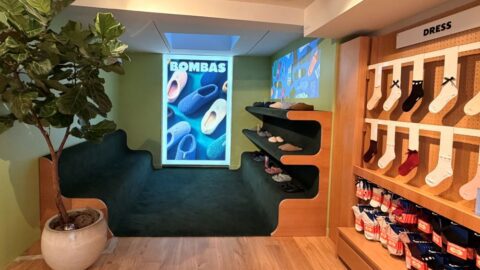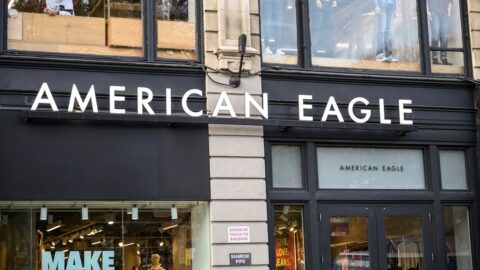The economy is improving and unemployment rates are declining at a consistent rate. As a result, consumers have a more positive sentiment towards purchasing items that are not staples of daily living. In fact, U.S. retail sales for 2011 grew 7.7% over 2010, according to the U.S. Department of Commerce’s report, titled “Advance Monthly Sales for Retail and Food Service, December 2011.”
These shifts in consumer preferences and behaviors are making retailers consider investments in tools and solutions that cater to the multichannel shopper. A recent study from the Retail Industry Leaders Associations (RILA) indicates that 82% of retailers will be spending the same or more on supply chain technology during 2012 versus 2011.
The third annual “The State of the Retail Supply Chain” report from RILA spotlighted four timely topics among retailers. These topics are as follows:
· Supply chain strategy, plans and general areas of strategic emphasis;
· Multichannel fulfillment to serve new shopper behaviors;
· Strategic sourcing to manage complex, global supply bases more efficiently;
· Information technology being implemented to improve performance; and
· Impending issues, challenges, risks and opportunities arising for supply chain management executives.
Although many merchants are acknowledging the economic turnaround, most are “cautiously optimistic” regarding how the retail industry will bounce back specifically, according to Casey Chroust, EVP of Retail Operations for RILA.
“Retailers believe the recovery is here, but they don’t want to become too bullish, too quickly,” Chroust told Retail TouchPoints. “As a result, retailers are tending to take a slower approach to investments than just jumping out there and over-extending themselves too soon.”
However, a majority of respondents are honing in on the growing importance of providing direct-to-customer and multichannel fulfillment. More than 85% of respondents indicated that direct-to-consumer fulfillment will command greater attention in the future. Seventy percent (70%) of surveyed executives work for multichannel retailers. The typical retailer in this group derives 9% of sales from consumer-direct channels, a metric that will grow to 15% within the next few years, according to the report. An additional 16% of participants work for traditional retailers that are adding or plan to add consumer-direct channels in the near future.
“We’ve continued to see double-digit growth in online shopping over the last decade,” Chroust explained. “As a result, the retailer has to have a successful online platform to complement its brand; it is a necessity in today’s environment. However, the ability to fill orders placed over mobile devices and online requires different processes and technologies than what it takes to buy and stock a store.”
Shoppers are browsing and buying online and via mobile more frequently, leading to greater expectations regarding shipping and pick-up options, Chroust reported. As a result, merchants must determine how they can create a customer experience that is seamless, regardless of channel, order size, origin and delivery option, such as buy online or picking up in store. Since most distribution and fulfillment centers are geared towards stores and not individual customer orders, retailers must analyze their current supply chain management processes and determine how to translate them for multichannel retail to ensure customer satisfaction.
“Multichannel fulfillment is all about retailers having the supply chain operations and processes to fulfill the traditional store orders at the same time as individual customer orders,” Chroust said. “Today’s multichannel retailer has to leverage those assets to compete with online pure play. Offering in-store pick-up and returns is an absolute necessity to differentiate store assets versus online-only retailers. Merchants are moving as quickly as they can to offer these options. In the retail environment, there’s no more disappointing customer experience than a failed in-store pickup. If a customer actually drives to a location to receive an item and it’s not there, that is one of the worst failures a retailer can have.”
3 Fulfillment Strategies
As retailers begin to determine how to integrate multichannel buying and delivery methods, they must first understand the different types of fulfillment strategies currently available. Three fulfillment options provided by RILA include:
1. Integrated Fulfillment: Retailers can utilize existing facilities to leverage inventories across channels. Items then are segmented during shipping activity;
2. Dedicated Fulfillment: Independent fulfillment centers are developed and categorized by selling channel. Operations within each center are tailored based on specific order profiles, frequencies and value-added service requirements of each channel or customer type; and
3. Hybrid Methods: A combination of integrated and dedicated fulfillment centers, hybrid strategies allow retailers to build their own models. For example, merchants can have separate inventories for retail replenishment and consumer-direct orders in a single facility, according to the RILA report.
“The growth in online and mobile spaces has retailers taking a second look at how they can grow more efficient in serving cross-channel shoppers,” Chroust said. “The multichannel customer segment is here to stay and will only grow more prevalent in the future. Retailers need to take their traditional models, turn them upside down, and implement new best practice models to serve these customers.”
However, to determine an optimal fulfillment strategy, retailers must determine customer expectations of multichannel experiences, as well as product variety and number of SKUs. In fact, to create a streamlined supply chain, retailers must balance three key factors: customer service expectations, inventory carrying costs and transportation costs.
“These areas are the levers you need to move and adjust,” Chroust explained. “Each retailer needs to look at these elements to determine where the strategy is going to take them, because overall supply chain strategies and approaches will be different for every merchant.”
Results for the report — which was released in partnership with Auburn University — were gathered through senior executive interviews and an online survey of 199 retail supply chain executives. To obtain concise insights among high-level concerns regarding supply chain management, RILA pursued participation from organizations with (1) annual revenues exceeding $1 billion; (2) multi-channel capabilities; and (3) broad geographic activity.
Survey participants included, among others, American Eagle Outfitters, Best Buy, Big Lots, CVS Caremark, Dick’s Sporting Goods, Dillard’s, PETCO, QVC and Sears Holdings Co.












